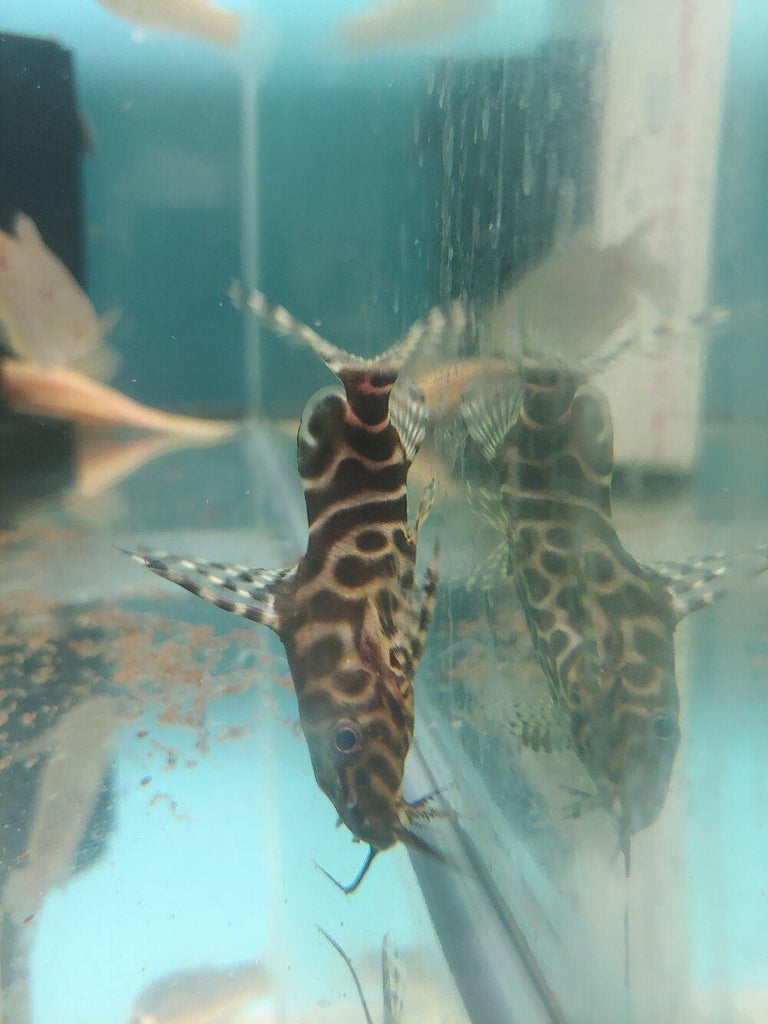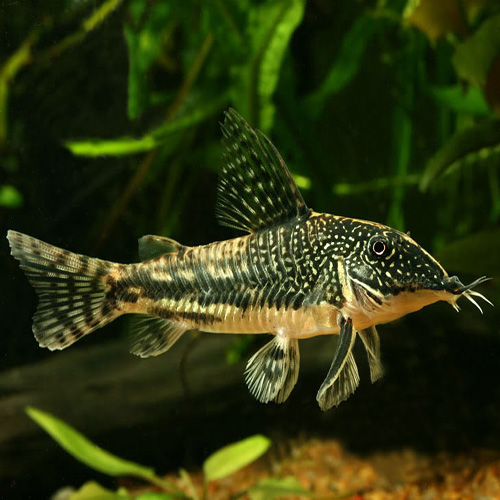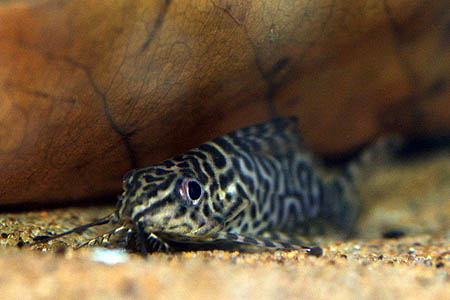Featherfin Squeaker Synodontis – The Consolidated Fish Farms Inc.

Featherfin Squeaker Synodontis The Featherfin Squeaker (Synodontis Eupterus) or Featherfin Synodontis are a species of Synodontis catfish. Their ability to make noises to communicate with one another and their high feather-like fin give them their name. The Featherfin Squeakers inhabit much of Central Africa and can be
Featherfin Squeaker Synodontis
The Featherfin Squeaker (Synodontis Eupterus) or Featherfin Synodontis are a species of Synodontis catfish. Their ability to make noises to communicate with one another and their high feather-like fin give them their name.
The Featherfin Squeakers inhabit much of Central Africa and can be mainly found in the basins of the White Nile, Volta and Niger Rivers, and the Chad basin.
They are fairly large, reaching 11.8 inches (30 cm) in the wild and 6-8 inches in an aquarium. Therefore, they require a decent-sized aquarium, preferably over 50 gallons, with lots of hiding places, particularly driftwood. Water in the tank should be of temperature 72.0 °F to 81.0 °F (22.2 °C to 27.2°C) and pH of 5.6 to 7.5.
Featherfin Squeakers are not aggressive but aren’t necessarily peaceful either and can therefore be termed as semi-aggressive. They pose little risk to small fish, and there is species internal bullying, which is rarely life-threatening but could cause stress.
The Featherfin Squeaker is long-lived and commonly has a lifespan of 8 to 10 years.
Feeds
Featherfin Squeakers are omnivores and will consume both plant and animal-based foods. Like most catfish, they are primarily scavengers and will eat most available items that are edible. They feed on insect larvae, algae, and any other food source they can scavenge in the wild.
In the aquarium, the Featherfin Squeakers are not hard to feed at all. Meaty foods and vegetable tablets will be appreciated by these species.
The most suitable foods for the Featherfin Squeakers are;
Brine shrimp,
Bloodworms,
Small earthworms,
Shelled peas,
Cucumber.
Tankmates
The Featherfin Squeakers mostly enjoy the company of their genus, but like most Synodontis, they have a hierarchy system based on size where the dominant Featherfin will get the best hiding place.
The Featherfin squeakers are not suitable for community aquarium environments with smaller fish species, delicate fish species, or small ornamental shrimp as they would be considered as food.
Featherfish Squeaker Synodontis do best when kept with;
African Cichlids
Mormyrids
Knifefish
Frequently Asked Questions
How big do Featherfin Squeakers get?
The Featherfin Squeaker will obtain a length of 6 to 8 inches (15-20 cm) in the aquarium, and up to 11.8 inches (30cm) in the wild.
Are Featherfin Squeakers Synodontis aggressive?
Featherfin Squeakers are neither aggressive nor peaceful and can therefore be termed as semi-aggressive. They can sometimes be aggressive towards each other but are mostly peaceful towards other similarly-sized species in their environment.
What fish can live with the Featherfin Squeaker?
The Featherfin Squeakers should not be kept with any small fish to be considered food and larger fish that could harass them. The ideal tankmates for the Featherfin Squeakers include Alestiid Tetras, African Cichlids, New World Cichlids, Mormyrids, and Knifefish.
Background
Scientific Name: Synodontis eupterus
Origin: Africa
Size Range: 6-7” at maturity
Breeding: Egg scatters
Feeding
Bottom Feeder

Consolidated Fish Farms – The Consolidated Fish Farms Inc.

How to care : Featherfin Catfish (Synodontis Eupterus)

Featherfin Synodontis = Rs.169.00 [22-03A-005] - Make My Hobby

PDF) BURGESS ICHTHYOLOGICAL COMPENDIUM

Synodontis Eupterus Catfish

PDF) BURGESS ICHTHYOLOGICAL COMPENDIUM

The Consolidated Fish Farms Inc.

FEATHERFIN SQUEAKER – Texas Aqua LLC

Catfish – The Consolidated Fish Farms Inc.

Synodontis euptera (Featherfin Synodontis) — Seriously Fish

Featherfin Squeaker (Synodontis eupterus)

Synodontis Eupterus Catfish